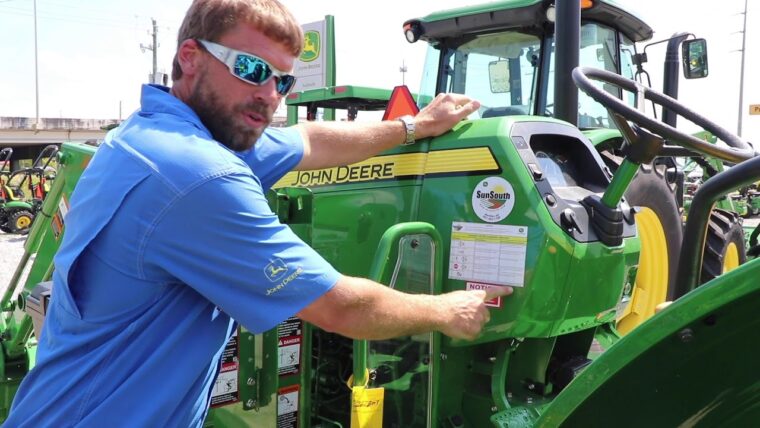With Interim Tier 4-equipped machines on their way to the field, we’ve found that regeneration of exhaust filters continues to be a source of questions for many operators. To help address those questions, we will take another look at the basics of exhaust filter regeneration with this blog. Dive in to get to know more about the John Deere exhaust filter cleaning and engine regeneration!

What is an Exhaust Filter on a John Deere Equipment?
The exhaust filter on John Deere equipment, or DPF, helps reduce harmful emissions. It traps exhaust soot and burns it off in an engine regeneration process to keep the filter clean. This system is key to meeting environmental regulations and ensuring optimal performance while minimizing environmental impact.
How Does John Deere Exhaust Filter Cleaning Works?
John Deere exhaust filter cleaning removes soot and ash to keep the filter working well. You can special equipment, strategies, and techniques to clean the filter without causing any harm to your equipment. Cleaning the exhaust filter helps John Deere’s agricultural, construction, and forestry equipment run smoothly and meet emissions standards.
How Often Should John Deere Exhaust Filter Cleaning Be Done?
Regular exhaust filter cleaning is essential to keep your John Deere equipment running smoothly. The frequency of cleaning depends on how many hours the machine has been used and the amount of ash build-up. Dealers usually recommend servicing every 3,000 to 5,000 hours, which may vary based on horsepower and usage. Following the manufacturer’s guidelines and maintaining a schedule is key to keeping your machine working well and preventing filter damage.
What Are the John Deere Exhaust Filter Regeneration Strategies?
It’s important to understand that, in most cases, the regeneration process does not impact machine operation or require operator involvement. Our exhaust filter regeneration strategies include:
Passive Regeneration
John Deere engines and exhaust filter components are designed for uninterrupted operation using passive regeneration, a natural cleaning process in which engine exhaust temperatures are sufficient to oxidize the particulate matter (PM) trapped in the exhaust filters. The process is continuous during normal engine operating conditions—greater than 30 percent load factor—and is the most fuel-efficient way to clean.
Active Regeneration
If conditions (temperature, load, or speed) for passive regeneration cannot be achieved, then PM must be removed using active regeneration, an automatic cleaning process. This requires injecting a small quantity of fuel into the exhaust stream for a short duration and elevating exhaust temperatures to clean the filter. It’s important to remember that, in most applications, active regeneration cleaning occurs only when passive regeneration isn’t possible based on temperature, load, and speed. It serves as a backup system.
Active regeneration begins when you partially restrict the filter. The process will take approximately 25 to 50 minutes from start to finish. If normal operating conditions cannot be achieved and filter loading begins to occur, John Deere’s exhaust temperature management (ETM) system manages the initiation and duration of the active regeneration. The actual cleaning process takes approximately 20 to 30 minutes.
Remember that, in most cases, the regeneration process uses exhaust heat created under normal engine operating conditions, so the operator won’t even notice it’s taking place. If an active regeneration is necessary, the engine’s control system can raise the exhaust temperature to regenerate the filter. In either case, regeneration does not impact machine operation.
Get Your John Deere Running Smoothly with Exhaust Filter Cleaning
Our exhaust filter system properly maintains itself without operator intervention while being completely transparent to the operator. Most of the processes with John Deere’s Interim Tier 4 engines happen behind the scenes, which enables operators to use their equipment the same way they used earlier equipment powered by John Deere engines. If you need further assistance, please contact your local John Deere dealer to learn more.
If you enjoyed this post or want to read others, feel free to connect with us on Facebook, Pinterest, Twitter, or Instagram!